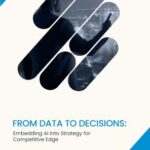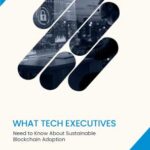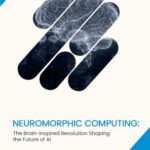or call: +1 (845) 347-8894

or call: +1 (845) 347-8894

B2B lead nurturing is no longer about who sends the most emails, it’s about who delivers the most relevance. In 2025, AI personalization is setting the pace for how businesses connect with potential buyers. Traditional workflows are being replaced by dynamic, insight-driven journeys tailored to each lead.
AI equips marketers with real-time intelligence, enabling precise, meaningful engagement at every stage of the funnel. Here are the ten most impactful ways AI personalization is transforming B2B Lead Nurturing this year.
According to Gartner, 80% of B2B interactions between suppliers and buyers will occur in digital channels by the end of 2025, making personalized AI engagement critical for lead retention.
Generic messaging no longer moves decision-makers. AI algorithms now analyze firmographics, behavior, and buying stage to recommend content uniquely suited to each lead. From whitepapers to product demos, every asset is tailored to individual needs. This boosts engagement while reducing drop-off rates across nurturing journeys.
Advanced personalization also helps marketing teams automate more without sacrificing the human touch, delivering relevance that feels bespoke.
Timing is everything in B2B Lead Nurturing. AI models forecast when a lead is most likely to engage based on previous interactions, device patterns, and behavioral signals. This lets marketing automation tools deliver emails, chat prompts, or retargeting ads exactly when the recipient is ready.
The result? Higher open rates, more meaningful interactions, and less wasted outreach.
Traditional segmentation relies on static lists. But in 2025, AI ensures every segment evolves based on current user actions. A prospect who suddenly downloads three case studies in a day will automatically shift into a higher intent segment, prompting more aggressive nurturing tactics.
This dynamic reshuffling keeps leads from slipping through the cracks—and shortens the sales cycle dramatically.
AI enables marketers to make data-driven decisions faster, resulting in more effective campaign planning and messaging,” says Einat Weiss, CMO of NICE
AI personalization makes lead scoring far more than a numeric system. In B2B Lead Nurturing, each score now reflects sector-specific buyer behavior. For example, a download might carry more weight in the software industry than in manufacturing. AI adapts models accordingly, helping sales teams prioritize leads with better accuracy.
This granular scoring system has become essential for targeting the right accounts at the right moment.
AI-powered chatbots have matured. Today’s systems understand not just language, but intent and tone. In nurturing campaigns, these bots answer product questions, suggest resources, or schedule demos without ever requiring a human rep until later stages.
Better yet, the conversation adjusts based on user behavior across channels, maintaining consistent personalization throughout the funnel.
From email and social to webinars and landing pages, leads often move between multiple touchpoints. AI ensures that each interaction is personalized and consistent, no matter the channel. It maps buyer journeys and coordinates messaging based on previous actions, reducing redundancy and enhancing the overall experience.
This orchestration empowers marketers to nurture leads with precision, not guesswork.
Email remains central to B2B Lead Nurturing. In 2025, AI tools will build message sequences around user behaviors, not just stages in a funnel. A lead who visits a pricing page may get a cost-benefit breakdown, while another who reads a blog might receive an in-depth eBook next.
These micro-adjustments increase click-through and conversion rates while reducing spam complaints and unsubscribes.
AI is now powering personalized video creation, where product demos and walkthroughs feature names, company logos, and relevant pain points. These assets feel uniquely made for the viewer, even though they’re automatically generated.
Interactive experiences like dynamic quizzes or ROI calculators further guide leads through personalized paths, offering value and insight before any direct contact.
Instead of waiting for leads to declare interest, AI now monitors third-party intent signals, such as competitor searches, review visits, or content downloads on external platforms. These insights let marketers adjust nurturing flows or launch timely outreach based on what leads are researching elsewhere.
B2B Lead Nurturing is becoming proactive, not reactive.
Every AI-personalized interaction generates more data. And AI doesn’t just collect—it learns. Feedback loops allow systems to refine personalization strategies over time. If one type of content stops converting, or if certain messages fall flat with specific industries, the model adapts.
This continuous optimization ensures your nurturing strategy never stays static and always improves.
AI personalization in B2B Lead Nurturing isn’t about replacing human marketers. It’s about augmenting their efforts with smarter insights and faster decisions. In a business environment defined by complexity and speed, this shift is crucial. AI helps marketing teams maintain relevance, reduce manual effort, and focus on creative strategy instead of repetitive tasks.
Organizations that embrace these innovations will build stronger relationships with leads, accelerate deal velocity, and maximize ROI from every campaign.
As more B2B firms adopt AI personalization, what once felt advanced will soon be expected. The challenge for marketers is to keep evolving, leveraging AI not just for efficiency, but for empathy. Leads aren’t just data points; they’re people navigating problems, timelines, and expectations.
In 2025, the companies winning in B2B Lead Nurturing are those that understand this balance. They use AI not to automate the human out of the process, but to make every interaction feel more human than ever.
AI personalization in B2B Lead Nurturing uses machine learning to tailor content, communication, and timing based on a lead’s behavior, industry, and stage in the buying cycle. It ensures each interaction is relevant and timely, improving engagement and conversion.
AI-driven lead scoring goes beyond surface metrics. It analyzes industry-specific actions, engagement history, and intent signals to assign scores that reflect real purchase readiness. This helps sales teams focus on leads that matter most.
Yes. AI tools create email content that adjusts to each recipient’s actions and preferences. They optimize subject lines, messaging tone, and timing, leading to better open rates and fewer unsubscribes.
In today’s fast-paced buying cycles, static nurturing flows miss opportunities. Real-time personalization ensures that content, offers, and follow-ups are always aligned with a lead’s latest actions or interests.
Leading tools include platforms like HubSpot, Marketo, Salesforce Einstein, and 6sense. These systems combine CRM data, behavioral tracking, and AI models to deliver smart, personalized nurturing journeys.
To participate in our interviews, please write to our IntentTech Media Room at sudipto@intentamplify.com




